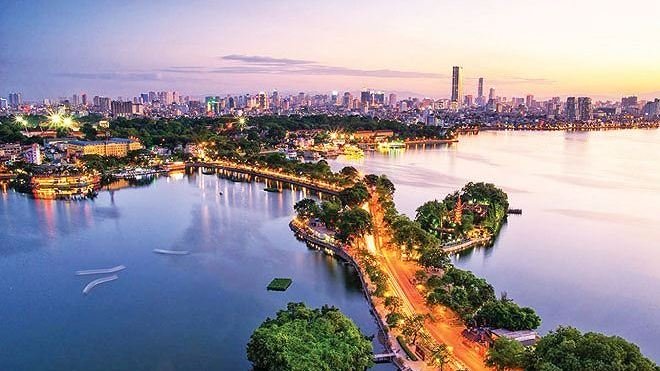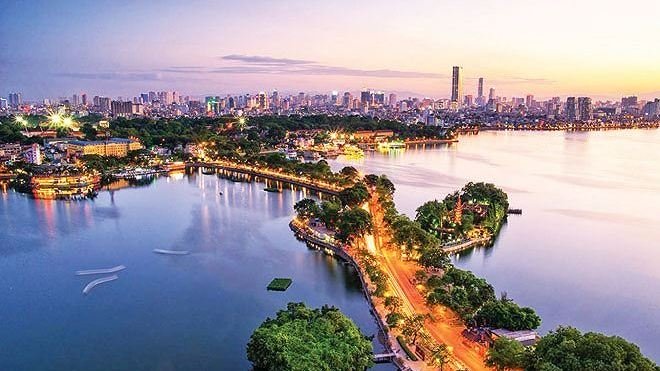
Hanoi and Ho Chi Minh City remained among the global Top 10 most dynamic growing cities in JLL’s Short-Term City Momentum Index (CMI) 2019, which tracks socio-economic and commercial real estate growth in 131 cities over a three-year period.

Hanoi ranks third among the global Top 10 most dynamic growing cities in
JLL’s Short-Term City Momentum Index (CMI) 2019. (Photo: Shutterstock))
Hanoi was ranked third while HCM City was ranked eighth, making
Vietnam the strongest performer with two cities ranking the highest in ASEAN,
said JLL.
In its report, JLL said that the two
cities in Vietnam performed very well for socio-economic momentum, with
fast-growing populations and economies.
"HCM City is generally viewed as
the more business-friendly destination attracting more overseas investment
along with a higher corporate presence, whereas Hanoi has lagged commercially
but is a city that is swiftly evolving."
On the real estate front, Vietnam has
"a small real estate investment market struggling with issues such as low
transparency and a limited volume of investment grade stock," JLL added.
However, steps are being taken to
improve transparency, such as enhanced access to the land registry, better
valuation practices and increasing application of green building certification
system, it said.
Two other ASEAN countries also made the
top 20 list in JLL’s index. The Philippines was represented by Manila in 12th
place and Thailand by Bangkok in 18th place.
According to JLL, the City Momentum
Index looks at 20 indicators including recent percentage changes in city GDP,
population, air passengers and corporate headquarters presence; projected
percentage changes in GDP, population and retail sales; and recent levels of
and changes in foreign direct investment, as a proportion of a city’s economy.
Other were recent and projected percentage
changes in office net absorption, office rents, retail rents and hotel rooms;
international retailer presence; and recent changes in direct commercial real
estate investment volumes and real estate transparency.
Source: NDO
The emulation movement "Hoa Binh joining hands to build new-style rural areas” has been widely spreading, becoming a driving force that motivates the localities to renew rural landscapes and improve the material and spiritual lives of the residents. In this movement, the people play a central role-both as the main implementers and direct beneficiaries of its outcomes.
In response to the global digital revolution, Hoa Binh Newspaper is transforming itself into a modern and multi-platform media hub, blending cutting-edge technology with a restructured newsroom and a new generation of tech-savvy journalists.
Hoa Binh province’s Association of the Elderly recently held a conference to review the project on expanding the inter-generation self-help club model until 2025.
In a move to implement Resolution No. 57-NQ/TW, issued on December 22, 2024 by the Politburo, which targets breakthroughs in science-technology development, innovation, and digital transformation, the Hoa Binh provincial Department of Health has issued a plan to roll out the "Digital Literacy for All” campaign within the local health sector.
An Nghia Commune (Lạc Sơn District) is one of the communes that achieved the tha standard of the national new rural area in 2018. Entering a new development phase, the commune is now trying to meet the criteria for the advanced new rural development. With the strong political will and the public consensus, the commune is gradually overcoming the challenges to reach this goal, aiming for the sustainable development.



